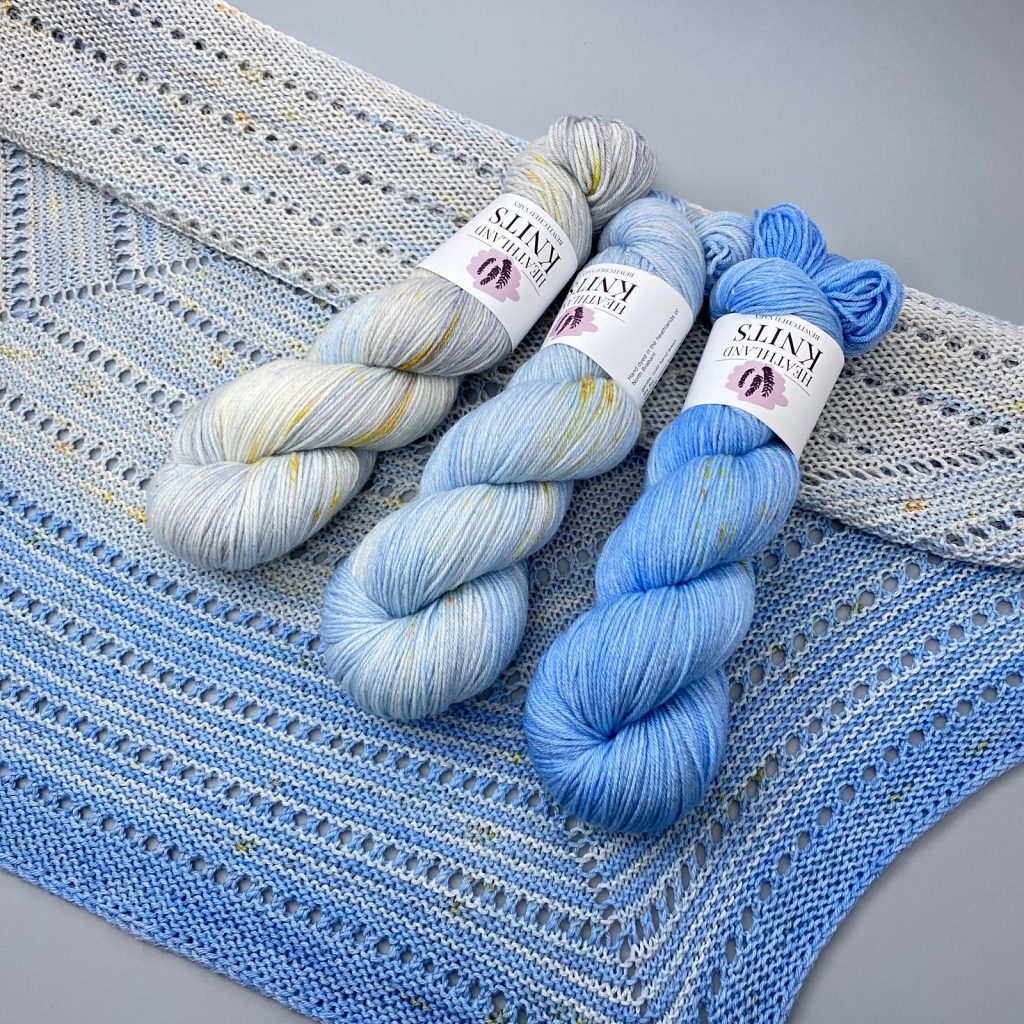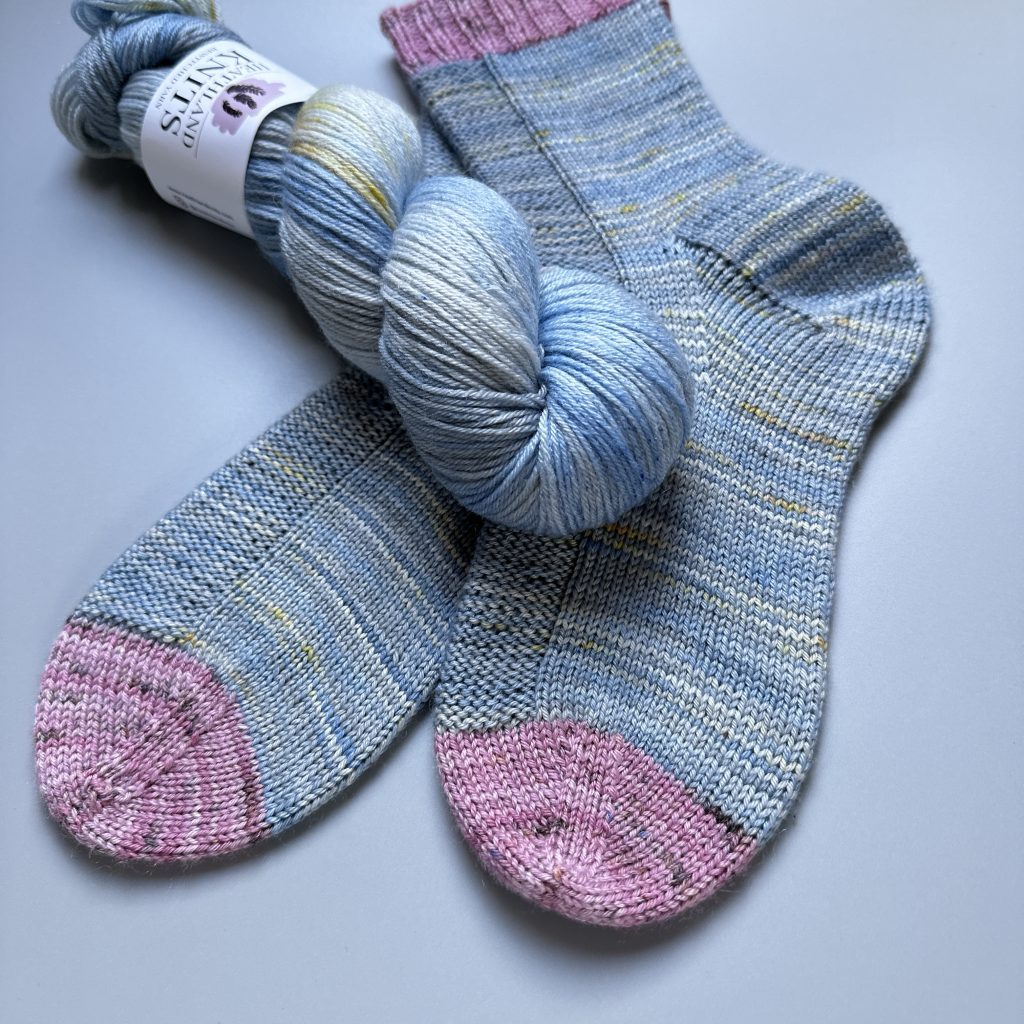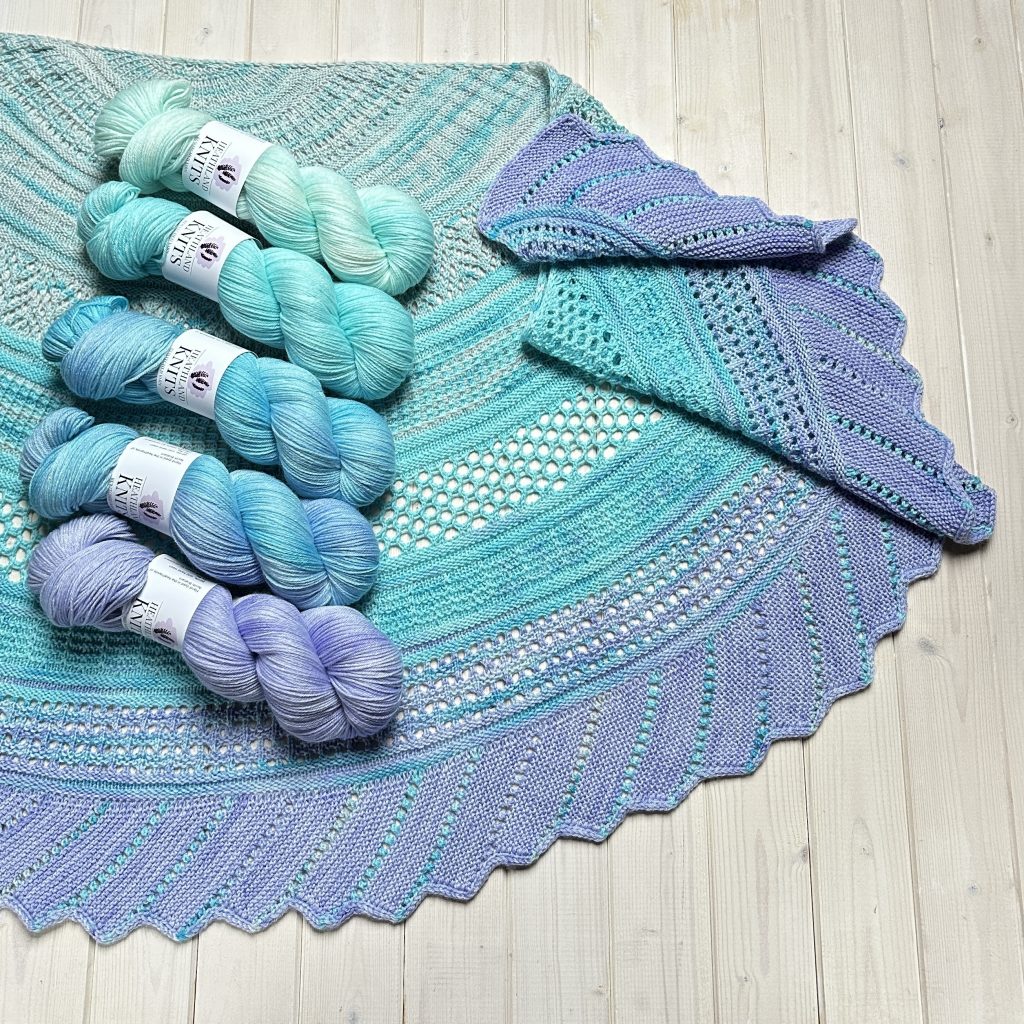
The Rooted Merino gets its name from the blend of extra fine merino wool and Tencel. Tencel is made from eucalyptus and belongs to Lycocell. The eucalyptus comes from France and is processed for the raw yarns in Austria. The sheep are kept without mulesing1.
| Composition | 60 % Merino, 40 % Tencel |
| Length | 400 m / 100 g |
| Yarn Weight | 4ply / Fingerning |
| Gauge | The average gauge is 29 stitches x 38 rows for 10 cm using 2.5 – 3 mm needles. |
| Care | This yarn is a “superwash” yarn. It can be washed at up to 30 degrees. The recommended care instructions apply. See also yarn care. |
You can finde some reference projects at the bottom of the page showing the dyed yarn knitted up in some beautiful projects.
Deutsch
Die Rooted Merino erhält ihren Namen durch die Mischung aus extra feiner Merinowolle und Tencel. Tencel wird aus Eukalyptus hergestellt und gehört zum Lycocell. Der Eukalyptus kommt aus Frankreich und wird für die Rohgarne in Österreich verarbeitet. Die Schafe werden ohne Mulesing1 gehalten.
| Zusammensetzung | 60 % Merino, 40 % Tencel |
| Lauflänge | 400 m / 100 g |
| Garnstärke | 4ply / Fingerning / Sockengarn |
| Maschenprobe | Die durchschnittliche Maschenprobe liegt bei 29 Maschen x 38 Reihen für 10 cm bei Verwendung von 2,5-3 mm Nadeln. |
| Pflegehinweise | Diese Garn ist ein “super-wash” Garn. Es kann bei bis zu 30 Grad gewaschen werden. Es gelten die empfohlenen Pflegehinweise. Siehe auch Garnpflege. |
Unten auf der Seite befinden sich einige Referenzprojekte, die zeigen, wie das gefärbte Garn zum Stricken von ein paar sehr schönen Projekten verwedent wurde.




1Mulesing is the removal of the skin around the tail of sheep without anaesthesia (stunning) while the sheep is fixated on its back in an apparatus. It is a common practice in Australia to prevent a parasitic fly infection (Wikipedia). This is causing physical and psychological trauma to the sheep. We reject this practice.
1Als Mulesing bzw. Mulesierung wird das Entfernen der Haut rund um den Schwanz von Schafen ohne Schmerzausschaltung bezeichnet. Die Schafe sind dabei in Rückenhaltung in einer Halterung fixiert. Es ist ein in Australien gebräuchliches Verfahren, um einen Befall mit Fliegenmaden zu verhindern (Wikipedia). Dies fügt den Schafen körperlichen Schmerz und ein mentales Trauma zu. Diese Praktik lehnen wir ab.
